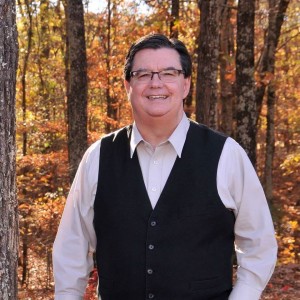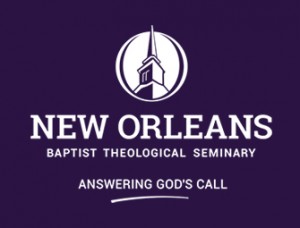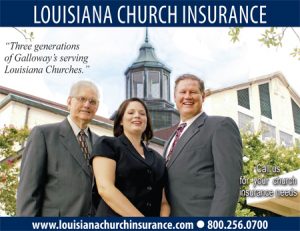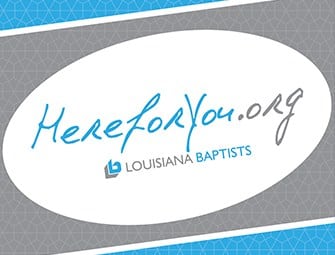By Ron F. Hale
David Hacker, a demographic historian from Binghamton University in New York, conducted research on newly digitized census data from the 19th century recalculating the death toll of the Civil War. The historic death tally has been approximately 620,000 men for over 100 years. Hacker’s new count reaches 750,000 men, and upwards to the
staggering possibility of 850,000 men. 1
The Trail
Who bears part of the blame for this red river of blood and the lingering costs and consequences of American slavery?
This article will shed light on those who defended the institution of chattel slavery in America. Their writings, speeches, and sermons left a traceable trail. If you are a student of history or theology many of the names on the list will shock you!
How could some of the most sophisticated people in America not see that the sin of slavery denied the self-evident truth “that all men are created equal, that they are endowed by their Creator with certain unalienable Rights, that among these are Life, Liberty, and the pursuit of Happiness?”
The Historian
Larry E. Tise is a noted historian, researcher, archivist, author, and professor at Binghampton University. He has served as State Historic Preservation Officer in both North Carolina and Pennsylvania. He helped found the National Council on Public History and the National Conference of State Historic Preservation Officers. This article leans on his painstaking research and the writing of his book Proslavery: A History of the Defense of Slavery, 1701-1840, 1987. He holds two degrees from Duke University and a PhD from the University of North Carolina at Chapel Hill.
Based on extensive studies of pro-slavery books, pamphlets, speeches, biographical collections 2 , and a quest to discover and explain the racism found in the many defenses of slavery, Tise judges that most historians have treated pro-slavery ideology morally rather than historically 3 .
Like finding the tail of a long serpent protruding from a dark hole, Tise slowly but surely extracts the American ideology of pro-slavery from its shadowy history and into the light by studying those who wrote in the defense of American slavery.
Pro-slavery defenders
Surprisingly, Tise erases the old myth that pro-slavery arguments began in the Old South in the nineteenth century. He shows that beginning in 1701, pro-slavery ideology was prevalent during the colonial and revolutionary years – first in New England.
Chapter Six has Tise pinpointing the America defenders of Slavery from 1790-1865. The length of this article will be extended by his list of 275 pro-slavery clergymen from the North and South who wrote, taught, and preached as ideological defenders and sociopolitical leaders of American slavery.
This group represents the elite of both ministry and American society, some of the most superbly educated, socially aware, and powerfully stationed in our nation. Almost half of all defenses of slavery published in America came from these pro-slavery ministers. 4
Tise discovered that pro-slavery clergymen came from every state and many European countries. Men from the North and New England dominated the first generation (born before 1800) of pro-slavery clergymen. 5 According to their birth years, he found three separate cohorts of men: 82 were born before 1800; 87 were born between 1801-1815; and 93 born between 1816-1839.
The first generation reached maturity prior to the rise of abolitionism; the second group near the peak of the first abolition crisis of the 1830s; and the latter during the last decade before the Civil War. 6
Of those born overseas: Germany, England, and Ireland loom largest. 7 Massachusetts produced as many pro-slavery clergymen writing in the defense of slavery as Georgia. 8 Charleston gave birth to more pro-slavery preachers than any city in the nation, with fourteen. 9
Tise indicates that four Protestant denominations gave our nation the most pro-slavery ministers. In fact, 77 percent of them grew up as Presbyterians, Episcopalians, Congregationals, or Baptists. The author states that, “over one-half (60.2 percent) were from the three major Calvinist churches.” 10
By far, Presbyterians delivered the most formal defenses of slavery in America, and published the most writings. 11 Presbyterians represented one-third of all pro-slavery clergymen. 12
Sixty percent of all pro-slavery clergy graduating from an American college or university received their degrees from schools north of the Mason and Dixon’s Line 13 ; Yale University educated the most pro-slavery pastors, with South Carolina College second, and Princeton University coming in third. 14 Of seminary educated clergy, Princeton Theological Seminary graduated more men who led in these three areas: formal defenses of slavery, pro-slavery writings, and pro-slavery and war sermons. 15 In an age when few Americans benefited from extended educational opportunities, pro-slavery ministers were among the best educated in American society. 16
The Elite
As social influencers, pro-slavery clergymen sat in the editor’s chair of at least 121 separate periodicals or newspapers. 17 By 1861, many pro-slavery clergymen had moved to the highest ecclesiastical positions in America; 16 percent were serving at the highest office in their church, while another 10 percent were in positions of denominational leadership. Almost 15 percent had assumed faculty or administrative positions at colleges and universities. More than one-half worked their way into influential city pulpits. 18
Before listing the 275 pro-slavery clergymen, it should be stated that most ministers did not write in the defense of slavery. It cannot be determined how many held pro-slavery convictions and spoke and preached them. Tise is dealing with men who wrote defending the institution of slavery and its perpetuation on American soil.
An example of ministers who were not “men of their times” or driven by monied interests were the Sandy Creek Baptists in South Carolina. Their Baptist Association voted in 1835 to condemn the practice of slavery as inconsistent with the spirit of the Gospel of Christ and voted to exclude members who would not abandon the practice of slavery. 19 Many other clergymen never supported slavery and many joined and led the abolition movement started by the great Christian leader, William Wilberforce in Great Britain.
Days before dying, the great Methodist revivalist John Wesley wrote encouraging William Wilberforce to depend totally on the Lord as he fought to end the slave trade and the practice of slavery. Wesley called slavery “that execrable villainy, which is the scandal of religion” and “unless God has raised you up for this very thing, you will be
worn out by the opposition of men and devils.” 20
The List
Dr. Tise lists those ordained clergymen who had published a book, a pamphlet, or a periodical article defending slavery as an indefinite perpetuation of servitude. Tise has no pretension that this list represents all such men. 21
Nehemiah Adams
John Bailey Adger
Samuel James Pierce Anderson
James Osgood Andrew
George Dodd Armstrong
Joseph Mayo Atkinson
Thomas Atkinson
Isaac Stockton Keith Axson
John Bachman
Thomas Bacon
Rufus William Bailey
Robert Baird
Samuel John Baird
Joseph S. Baker
Samuel Davies Baldwin
William Barlow
William Hazzard Barnwell
Otto Sievers Barten
Henry Biddleman Bascom
Archibald John Battle
George Addison Baxter
Samuel Benedict
Phillip Berry
Daniel Perrin Bestor, Sr.
George Washington Blagden
Albert Taylor Bledsoe
Seth Bliss
Joseph Luke Blitch
Jonas Bondi
Jonathan Boucher
Nathaniel Bowen
James Pettigru Boyce
Ebenezer Boyden
William Theophilus Brantly
William Tomlinson Brantly
William Henry Brisbane
Iveson Lewis Brookes
David Brown
William Gannaway Brownlow
Samuel J. Bryan
William Calmes Buck
John Lansing Burrows
William C. Butler
Gabriel Capers
William Capers
Theodore Clapp
Simon Clough
John Calkins Coit
Calvin Colton
Amasa Converse
Moncure Daniel Conway
William Carey Crane
Nathaniel Macon Crawford
Moses Ashley Curtis
Lucious Cuthbert, Jr.
Robert Lewis Dabney
John Leadley Dagg
Frederick Dalcho
William Tucker Dickinson Dalzell
William C. Dana
Amos Cooper Dayton
Thomas Lockwood DeVeaux
Andrew Flinn Dickson
David Seth Doggett
Simeon Doggett
Daniel Isaiah Dreher
John Dubose
Thomas Sanford Dunaway
James Alexander Duncan
Samuel Dunwoody
William Woodward Eells
James Habersham Elliott
Stephen Elliott
John England
Charles Andrews Farley
Benedict Joseph Fenwick
Jesse Babcock Ferguson
Isham Randolph Finley
Theophilus Fisk or Fiske
Robert Fleming
Frederick Freeman
George Washington Freeman
Richard Fuller
John Fulton
James Clement Furman
Richard Furman
Christopher Edwards Gadsden
Christopher P. Gadsden
John Lafayette Girardeau
Richard S. Gladney
Alexander Glennie
William Graham
William Henry Green
Alexander Gregg
James K. Gutheim
William T. Hamilton
Charles Hodge
John F. Hoff
Jonathan M. Hoffmeister
Moses Drury Hoge
William James Hodge
Adam Tunno Holmes
John Henry Hopkins
Samuel Blanchard How
George Howe
William Bell White Howe
Robert Boyte Crawford Howell
John Hughes
Bernard Illowy
Ferdinand Jacobs
George Jacobs
Henry Jacobs
Devereux Jarratt
Jeremiah Bell Jeter
Charles Colcock Jones, Sr.
Hugh Jones
John Jones
George Junkin
Henry Keeling
James Ryland Kendrick
Francis Patrick Kenrick
Lender Ker or Kerr
William Knox
Ulrick Vilhelm Koren
John Michael Krebs
Drury Lacy
James Sanford Lamar
Sylvanus Landrum
Peter Laurentius Larsen
Joseph Spry Law
William T. Leacock
P.R. Leatherman
Hanson Lee
Leroy Madison Lee
Isaac Leeser
Edwin Leigh
Max Lilienthal
Andrew Agate Lipscomb
Augutus Baldwin Longstreet
John Chase Lord
Nathan Lord
William Wilberforce Lord
James Adair Lyon
Alexander McCaine
John B. McFerrin
William Henry McIntosh
James Alphonsus McMaster
Samuel Brown McPheeters
Holland Nimmons McTyeire
David Magie
Charles Dutton Mallory
Adolphus Williamson Mangum
Basil Manly, Jr.
Basil Manly, Sr.
Auguste Marie Martin
William Meade
Thomas Francis Meagher
Patrick Hues Mell
Alexander Gardiner Mercer
Thomas Meredith
Maximillian J. Michelbacher
James Warley Miles
Charles Frederic Ernest Minnigerode
John Mitchel
Arthur Mitchell
Elisha Mitchell
James Cake Mitchell (born James
Mitchell Cake)
Thomas Vernor Moore
Philip P. Neely
Alexander Newton
William Norwood
Jacob Aall Ottesen
Benjamin Morgan Palmer
Benjamin Morgan Palmer (nephew of
above)
John Paris
Joel Parker
George Patterson
Thomas Ephraim Peck
Napoleon Joseph Perche
George Foster Pierce
Henry Niles Pierce
Charles Cotesworth Pinckney
William Swan Plumer
Leonidas Polk
Edward Albert Pollard
Abner A. Porter
Rufus Kilpatrick Porter
Jehu G. Postell
Nathaniel Alpheus Pratt
William Otis Prentiss
Herman Amborg Preus
Josiah Priest
Robert Quartermann
James Beverlin Ramsey
Alfred Magill Randolph
Morris Jacob Raphall
Edward Reed
William Rees
John Jefferson DeYampert Renfroe
Nathan Lewis Rice
Richard Henderson Rivers
John Robinson
Stuart Robinson
Frederick Augustus Ross
William Henry Ruffner
John Andrew Scott, Sr.
William Anderson Scott
Samuel Seabury
William H. Seat
James Shannon
Wilhelm Sihler
Alexander Sinclair
Philip Slaughter
Robert Newton Sledd
James A. Sloan
Jacob Henry Smith
Whitefoord Smith
William Andrew Smith
James Smylie
Thomas Smyth
Ichabod Smith Spencer
Urbane C. Spencer
Gardiner Spring
Edward Josiah Stearns
John Steele
Joseph Clay Stiles
Thornton Stringfellow
Moses Stuart
- F. Sturgis
Thomas Osmond Summers
Henry H. Talbird
Samuel Kennedy Talmage
A. W. Thomas
Thomas Thompson
Thomas C. Thornton
James Henley Thornwell
Isacc Taylor Tichenor
Henry Holcombe Tucker
Joel W. Tucker
Henry Allen Tupper
Simon Tuska
Henry Jackson Van Dyke
Charles Stuart Vedder
William H. Vernor
Augustin Verot
Francis Vinton
Carl Ferdinand Wilhelm Walther
Ebenezer Wills Warren
Jared Bell Waterbury
William Hamilton Watkins
Benjamin Joseph Webb
Judah Wechsler
Nathaniel Sheldon Wheaton
William Wheelwright
William Spotswood White
George Whitefield
John Thomas Wightman
William May Wightman
Calvin Henderson Wiley
Albert Williams
D. Williams
Richard Hooker Wilmer
John Leighton Wilson
Joseph Ruggles Wilson
Joshua Lacy Wilson
Samuel Ramsey Wilson
William Winans
Edwin Theodore Winkler
Thomas Sumner Winn
Hubbard Winslow
Isaac Mayer Wise
My driving-factor in writing this article can be blamed on my 4th grade teacher. She was a mass-paddler. Our wholesale dose of deliberate pain usually happened as we (the boys) marched single-file to or from the cafeteria. One wrong step or juvenile giggle and her swift justice ran through us like veal through a meat grinder.
Regretfully, since every boy got paddled, no one clearly knew “who” committed the initial transgression.
Clearly these 275 men participated and prolonged the sin of slavery in America.
1.http://www.historynet.com/interview-j-david-hacker-awful-tally-goes-higher.htm
2.Larry E. Tise, Proslavery: A History of the Defense of Slavery in America, 1701-1840 (Athens: The University of Georgia Press, 1987), 367.
Appendix Two shows the Proslavery Ideography Codebook regarding the systematic arrangement of all biographical data and manageable variables. These calculations are used as the biographical data in chapter 6 and the rest of the book.
3.Ibid., xiii.
4. Ibid., xvii.
5. Ibid.,130. Southerners would be the leaders of the proslavery movement by the third generation or after 1830.
6. Ibid., 128.
7. Ibid., 128.
8. Ibid., 129.
9. Ibid., 129.
10. Ibid., 134.
11. Ibid., Table 6.3, 135.
12. Ibid., 155. Episcopalian’s wrote 20 percent, Baptists wrote 18 percent, and 14 percent Methodist. The remaining 17 percent were spread widely over almost every other church in America in the nineteenth century.
13. Ibid., 143.
14. Ibid., Table 6.8, 143. College of Charleston graduated 8, with Union University in New York, Hampden-Sydney College in Virginia, and Harvard University all graduating seven.
15. Ibid., Table 6.10. 146. Andover Theological Seminary (Congregational) came in second with a total of 46.
16. Ibid., 137. About 89 percent of these ministers attended class through the high school level, while three of four attended college.
17. Ibid., 168.
18. Ibid., 162. While many proslavery clergymen entered church work at the bottom level, Tise found that reviewing the highest ecclesiastical positions achieved by proslavery ministers before 1861, three-fourths (74.6 percent) of the whole had reached or were on the way to them (highest positions)by the Civil War.
19. Elder Geo. W. Purefoy, A History of the Sandy Creek Baptist Association for its Organization in A.D. 1758, To A.D. 1858, (New York: Sheldon & Co., Publishers, 1859), 163-164.
20. Eric Metaxas, SEVEN MEN: And the Secret of Their Greatness, (Nashville: Thomas Nelson,2013), 46-47.
21. Tise, Proslavery, 363-366.
Ron F. Hale has served as a pastor, denominational leader, and religion writer. He currently serves a SBC congregation in his hometown of Jackson, Tennessee, and may be reached at RonFHale@yahoo.com




